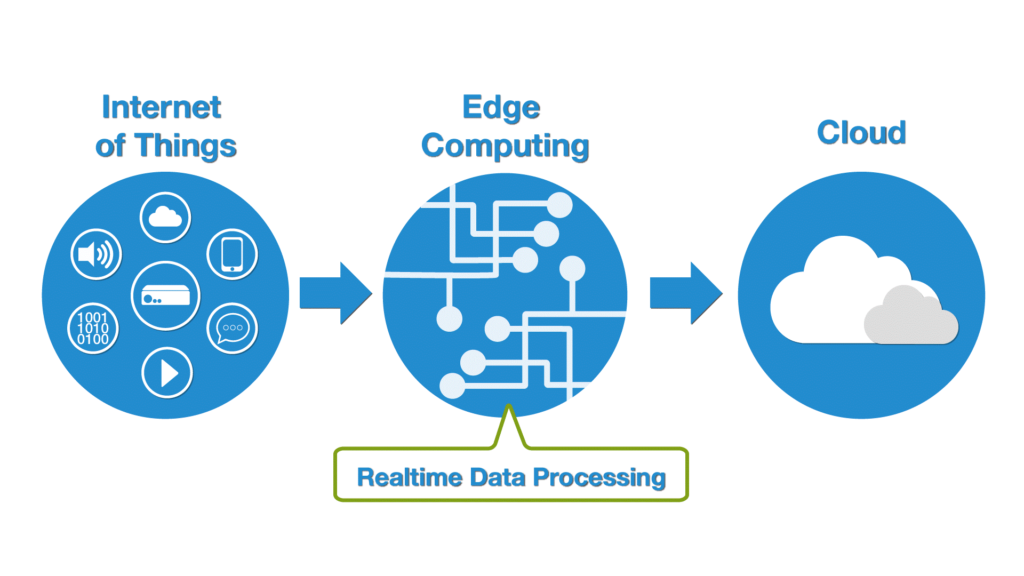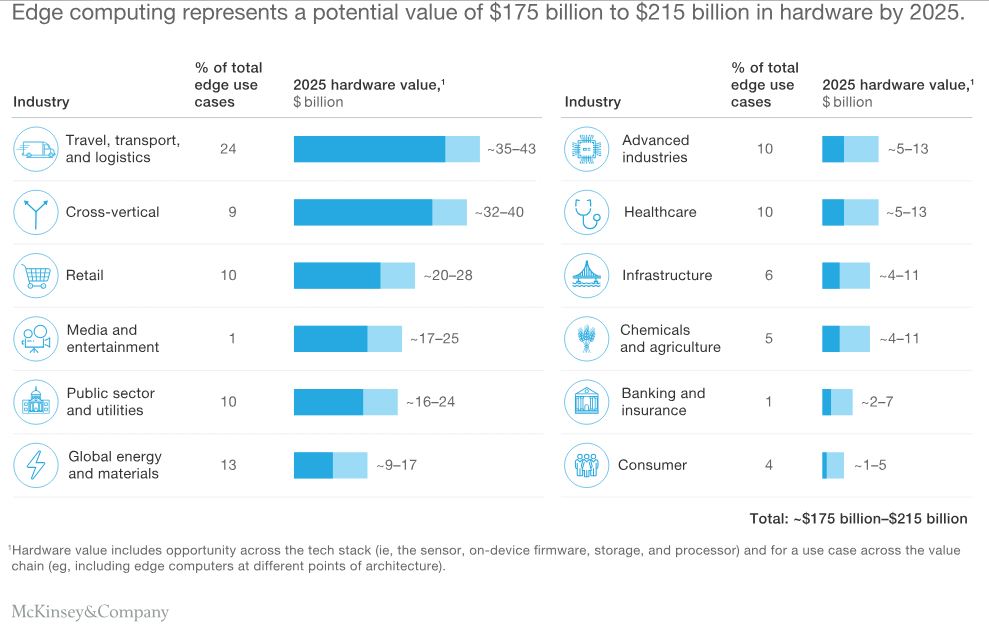
Edge Computing, over 100 edge use cases identified, the fast-growing need to power connected devices demands a custom response from vendors.
Connected devices proliferate and their capabilities expand, so does the need for real-time decision making untethered from cloud computing’s latency, and from connectivity in some cases. This movement of computational capacity out of the cloud—to the edge—is opening up a new sector: edge computing.
By circumventing the need to access the cloud to make decisions, edge computing provides real-time local data analysis to devices, which can include everything from remote mining equipment and autonomous vehiclesto digital billboards, wearable health appliances, and more.
IoT devices tend to operate under different conditions from those of the controlled environments of offices and factories, driving demand for a whole new set of technologies that can allow computing in those situations. Take the scenario of a military drone deployed on a tactical surveillance mission in a high-intensity combat zone. It is essential for the drone to be able to collect, process, and transmit high-quality data in real time, despite numerous challenges, including remote location, limited connectivity, and extreme environmental conditions.
While the drone can use mobile satellite connectivity to access the secure military cloud, it’s much faster if it does the computing onboard, using lightweight data storage and compute power. This way of computing—on the edge of the cloud—lets the drone stay in sync with both the command center and troops on the ground, without the latency that computing in the cloud involves. Once the job is done, the drone returns to base and can connect with the larger system, now transferring its data to the cloud, where it can be used to feed algorithms and other advanced analytics activities.
In considering the sheer variety and volume of edge use cases, it becomes clear that the demand for the edge computing technologies that enable them will in turn create myriad opportunities in a vast number of industries. In this article, we map out more than 100 edge computing use cases across 11 sectors that we believe could create more than $200 billion in hardware value in the next five to seven years.
What drives edge computing?
To understand what effect edge computing will have, it is important to know what causes its evolution. Edge computers have an infinitely wide range of uses; however, the conditions in which they operate form the driving factors for this new field and the technologies that serve it. These are:
Varied connectivity and data mobility. Edge technologies can operate in places that might limit or require intermittent connectivity to the cloud for services like computing, storage, backup, and analytics.
Need for real-time decision making. Edge use cases often require data to be processed instantly, for self-driving cars or automatic picking machines, for example. These devices and platforms need to be able to do analytics locally, without first sending data to the cloud, so decisions can be made rapidly.
Localized compute power. Edge computers need to be lightweight devices that can make fast, secure decisions without the support of bigger computing power.
New storage and security needs. As the numbers of sensors generating data on remote and mobile devices grow, so does the need for efficient storage that can be secured in a variety of environments.
Intermittent power. Power and infrastructure variations at the edge are pushing the boundaries of performance and capabilities of edge solutions. Especially in industrial applications, edge computers need to be able to operate with a power supply that might be sporadic.
What opportunities will edge computing open?
Unlike recent technological advances such as cloud computing, where most gains were captured by just a few major players in the technology sector, edge computing creates opportunities across a breadth of industries. In addition, while much of today’s technical infrastructure is sector-agnostic—the same cloud that powers an ecommerce engine also powers the workflow of a bank—edge computing technologies need to be more specialized. For example, the data storage and computing power needed for precision agriculture will be different from that needed to run mobile, durable medical appliances or safety equipment in a mine.
The benefits of past technology revolutions were concentrated in sectors with heavy tech users, such as financial services. For edge computing, sectors that have traditionally been less tech-intensive, such as energy and materials, stand to make substantial improvements in human productivity and safety from edge computing.
Given the central theme of edge computing—that a majority of the computing is done closer to where the data is being generated, and so real-time decision making can’t rely on the traditional cloud or massive on-premises data centers, the varying conditions that each use case involves drive the technology needed for it. Looking at this through the lens of specific use cases gives a sense of the range of technologies that will be needed. For example, autonomous vehicles rely on visual processing, among other technologies, and these systems have to be able to withstand rugged environments that involve variations in weather, vibration, and connectivity.

